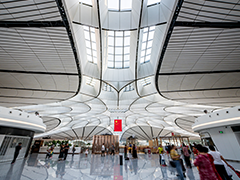Broadcast development history Understanding the application of broadcast products
- Categories:Industry News
- Time of issue:2018-09-26 14:50
- Views:
(Summary description)
Broadcast development history Understanding the application of broadcast products
(Summary description)
- Categories:Industry News
- Time of issue:2018-09-26 14:50
- Views:
Since the reform and opening up, due to economic development and technological advancement, in terms of public broadcasting, the situation has changed a lot, both domestically and internationally. So far, the broadcasting field has been rapidly developed from traditional broadcasting to digital control---intelligent---networking--digital.
In China, the development of the broadcasting field is divided into three stages. From the initial school background music, manual broadcasting, traditional broadcasting, to the subsequent intelligent, automated broadcasting, the recent and future development is digital networked broadcasting. The future development is biased towards network, and product development will be widely applied to major units based on the network platform, including schools.
Specifically: the first stage, the hotel background music to the 1980s, during this period broadcast as "tweeter plus power amplifier type", belonging to the most traditional ordinary broadcast. After the 1980s, with the continuous development of China's economy and science and technology, from 1980 to 2000, China's broadcasting has risen to the stage of intelligent automatic broadcasting. Taking computers as a means of control, as for frequency modulation or other, it is a specific technical problem. After 2000, the Chinese economy has entered the network economy, and the development of the broadcasting industry has entered a peak period. The broadcasting technology has also changed from intelligent to network, namely IP broadcasting. At this point, the computer will no longer be used as a control, but a computer as the main device for transmission, that is, what we are talking about now, through the development of computers, using the network to communicate.
Broadcast applications are very broad. In addition to public broadcasting systems such as building broadcasting, the most important one is campus broadcasting.
Public broadcasting is a broadcast that serves the public to a limited extent. In the conventional case, a public broadcast signal is transmitted through a broadcast line disposed in a broadcast service area, and is a one-way (downlink) cable broadcast. Usually installed in communities, institutions, military units, enterprises, schools, buildings, supermarkets, and various venues, for publishing news and internal information, releasing work signals, providing background music, and for paging and forcibly inserting accidental accidents. Broadcast and so on.
Campus broadcasting is the highest industrial belt in China's education sector. In the development of campus broadcasting, the applicability of campus broadcasting has been applied to its functionalization from the beginning of a single broadcast gymnastics and broadcast notification activities. At present, it has been applied to voice teaching equipment, foreign language listening test and other functions. As the cause of broadcasting continues to improve with the continuous improvement of economic, policy and cultural levels.
Scan the QR code to read on your phone
Related News

OBT WeChat

OBT Mobile Website
Copyright © Shenzhen OBTPA Technology Co.,Ltd. 粤ICP备18028288号





